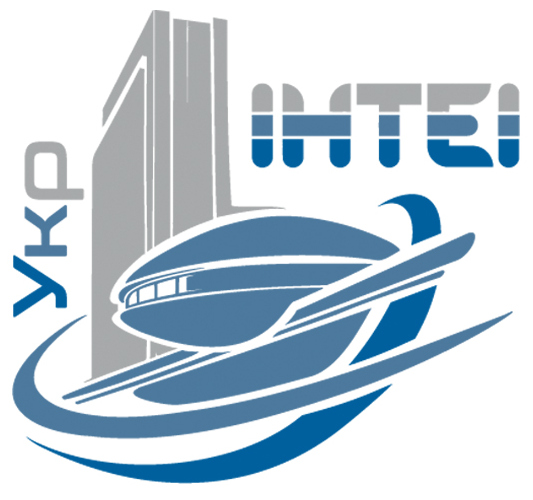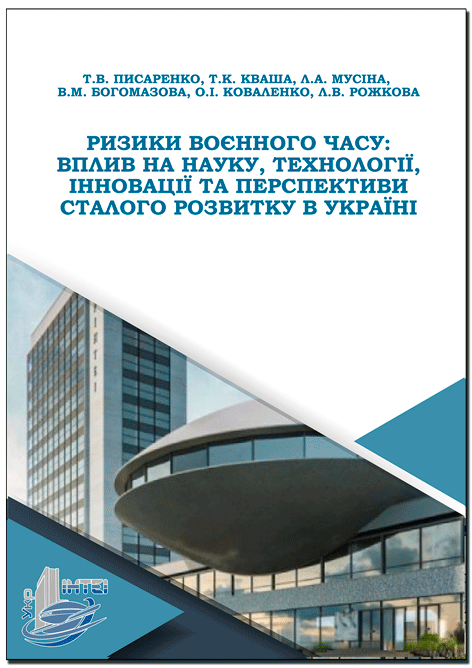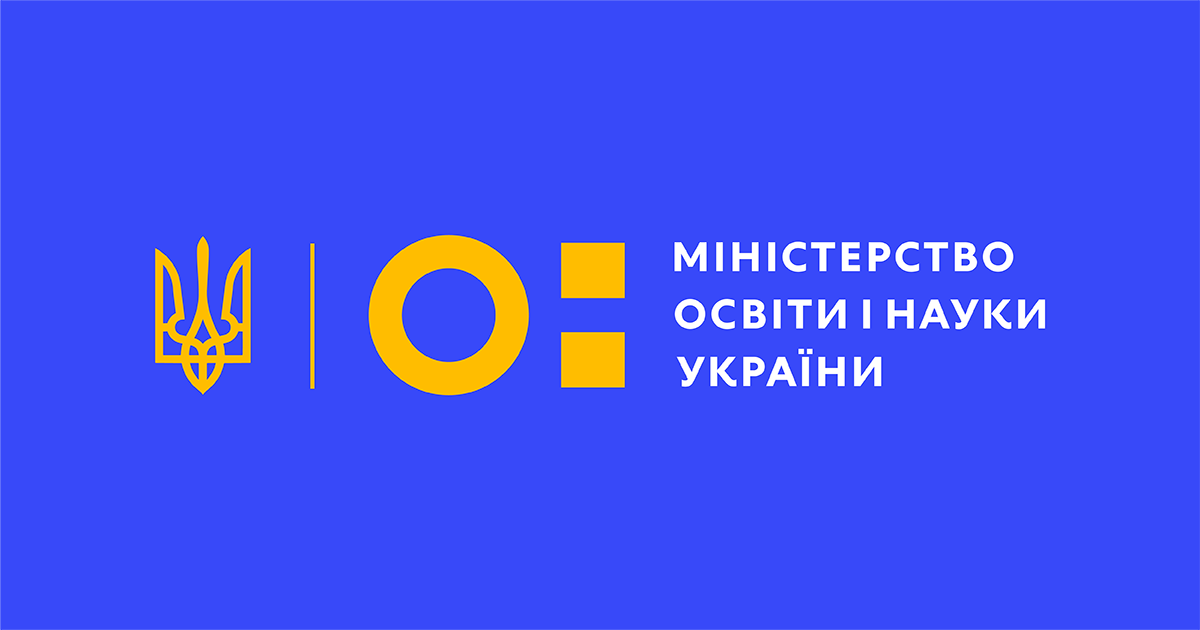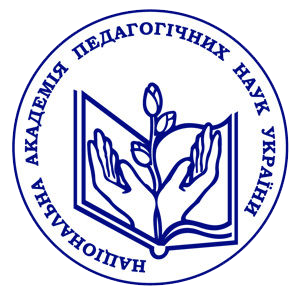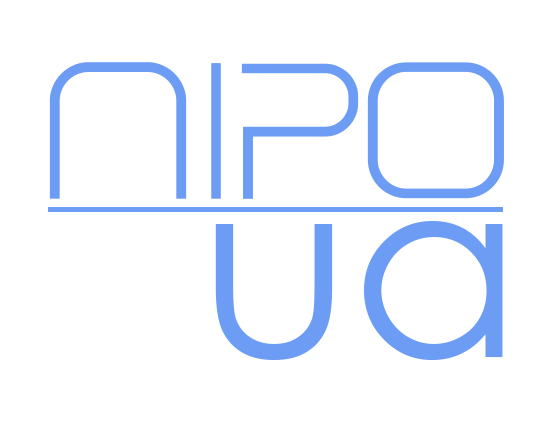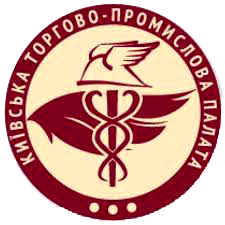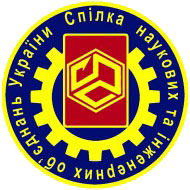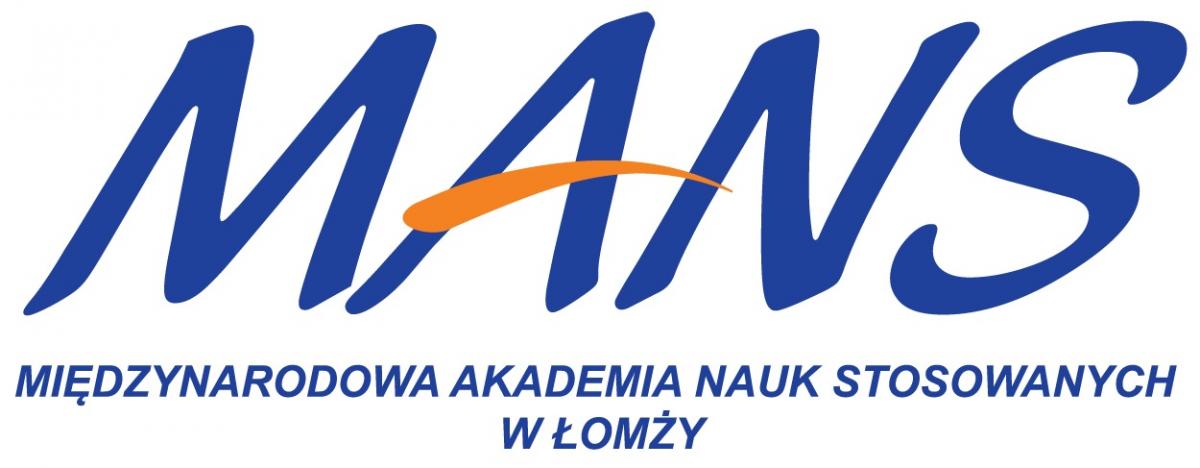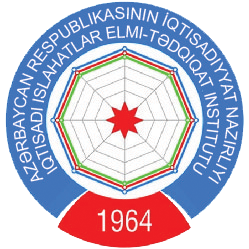http://doi.org/10.35668/978-966-479-150-9
Wartime Risks: Impact on Science, Technology, Innovation, and Prospects for Sustainable Development in Ukraine
UDC [330.341.1+001.895](477)
ISBN 978-966-479-150-9 (online)
Pysarenko T. V. — PhD in Engineering, Deputy Director of State Institution “Ukrainian Institute of Scientific and Technical Expertise and Information”, 180, Antonovycha Str., Kyiv, Ukraine, 03150; +38 (096) 376-38-14; tvpisarenko@gmail.com; ORCID: http://orcid.org/0000-0001-9806-2872
Kvasha T. K. – Head of the Department, Ukrainian Institute of Scientific and Technical Expertise and Information, 180, Antonovycha St., Kyiv, Ukraine, 03150; (044) 5210074; E-mail: ntatyana@ukr.net; kvasha@uintei.kiev.ua; ORCID: http://orcid.org/0000-0002-1371-3531
Musina L. A. – PhD in Economics, leading researcher, Ukrainian Institute of Scientific and Technical Expertise and Information, 180, Antonovycha Str., Kyiv, Ukraine, 03150; +38 (050) 351-08-84; musina@ukr.net; ORCID: http://orcid.org/0000-0002-7706-3451
Bohomazova V. V. – PhD in Economics, leading researcher, Ukrainian Institute of Scientific and Technical Expertise and Information, 180, Antonovycha Str., Kyiv, Ukraine, 03150; (044) 5210080, Е-mail: verbog@ukr.net; ORCID: https://orcid.org/0000-0002-8756-3871
Kovalenko O. I. – PhD in Economics, Senior Research Associate, Ukrainian Institute of Scientific and Technical Expertise and Information, 180, Antonovycha St., Kyiv, Ukraine, 03150; +38 (044) 5210080; E-mail: helen.smithua@gmail.com; ORCID: https://orcid.org/0009-0000-4427-1564
Rozhkova L. V. – Head of the Sector, Ukrainian Institute of Scientific and Technical Expertise and Information, 180, Antonovycha St., Kyiv, Ukraine, 03150; (044) 5210967; E-mail: liliya_rozhkova@ukr.net; ORCID: http://orcid.org/0000-0001-8002-3461
Abstract. The monograph “Wartime Risks: Impact on Science, Technology, Innovation, and Prospects for Sustainable Development in Ukraine” offers a critical and timely contribution to understanding the consequences of war on the country's scientific and technological landscape. Conducted within the framework of the Sustainable Development Goals (SDGs), which are particularly relevant for a nation in wartime, the study examines how Ukraine's war economy operates amid persistent uncertainty. The authors address a wide spectrum of risks and challenges confronting Ukraine today, particularly in areas of science, technology, innovation, and the environment. This monograph is the first of its kind in Ukraine, as the impact of wartime conditions on science, technology, and innovation (STI) has been insufficiently explored until now.
The methodology of the study adopts an interdisciplinary approach, blending socio-economic and institutional analysis. Utilizing tools such as bibliometric and factor analysis, the authors identify key risks and opportunities arising from the war that could affect Ukraine's scientific and technological potential. The monograph not only assesses the current state of research but also highlights critical factors influencing the country’s post-war recovery. Despite the challenges, the authors assert that Ukraine possesses significant scientific and technological potential, particularly in fields like information and communication technologies, mathematics, physics, and renewable energy. These areas may serve as pillars for the nation's future reconstruction. The study also suggests promising research and development trajectories that could restore Ukraine’s STI capacities.
This work makes a significant contribution to understanding the pivotal role of science and technology in Ukraine's wartime recovery. It is particularly valuable as scientific research in Ukraine has, until now, largely overlooked the specific risks posed by wartime conditions. Moreover, the monograph successfully integrates both theoretical and practical dimensions of STI development, which are essential for the country's sustainable future.
The first chapter offers a thorough analysis of Ukraine’s socio-economic challenges during the war. The authors highlight how the war has catalyzed profound transformations in both the economy and society, complicating the achievement of national SDG targets. Specific attention is given to the science and technology sector, which has suffered from reduced funding, infrastructure destruction, and the emigration of qualified personnel. Nevertheless, the authors note that with appropriate support for science and innovation, recovery is possible.
The second section explores the SDG 9 mission, “Digitalizing Society,” a critical area for Ukraine's post-war development. The war has significantly slowed progress in this domain, but the authors underscore the importance of digitalization for recovery. They analyze the barriers to integrating digital technologies into the economy and society, which have hindered the effectiveness of this mission. They also propose solutions, advocating for investments in digital infrastructure and support for digital startups as essential steps for the future.
The third section examines the impact of the war on healthcare, which has suffered from the destruction of medical infrastructure, supply chain disruptions, and the loss of human resources. The authors outline the increased health risks resulting from these challenges and their detrimental effect on achieving SDG targets related to health and wellness. The analysis is detailed, providing a clear understanding of how the war has undermined the healthcare system and the necessary steps for rebuilding it.
The fourth section addresses the “Resource Efficient Economy and Alternative Energy” mission, which has encountered significant challenges due to the war. The destruction of energy infrastructure, resource shortages, and difficulties in advancing alternative energy sources are all highlighted. However, the authors also point out potential opportunities for innovation in the energy sector post-conflict, suggesting that this crisis could serve as a catalyst for long-term growth and development.
The chapter on “Environmental Management and Circular Economy” delves into environmental issues exacerbated by the war. It addresses the degradation of natural resource management, ecosystem destruction, and environmental risks that complicate SDG implementation. However, the authors argue that environmental protection is integral to Ukraine's European Union integration process, linking climate change mitigation and the Green Agenda to the post-war recovery effort. Sustainable recovery and transformation, they argue, must be at the heart of Ukraine's reconstruction strategy.
The sixth chapter explores the challenges posed to the “Safe Food” mission, which has been severely impacted by the war. The destruction of agricultural infrastructure, logistical difficulties, and increased food insecurity threaten the provision of quality food. The authors present concrete recommendations for overcoming these challenges, such as advancing agricultural technologies and restoring food supply chains, which are vital for post-war recovery.
The final section focuses on industrial technology and materials science, sectors hit hard by the war. The authors analyze the severe losses in research and development related to materials science and industrial technology, which are essential for the country's industrial future. However, they also propose strategies to restore and advance these sectors, particularly through innovation and supporting research initiatives.
In conclusion, the authors underscore the devastating impact of the war on Ukraine’s progress toward the SDGs. They stress the need for restoring scientific and technological infrastructure, strengthening international cooperation, and investing in advanced technologies to rebuild the post-war economy and society. The integration of scientific research into the socio-economic recovery process is presented as a key factor for Ukraine's successful reconstruction.
This monograph is a valuable contribution to the study of the war’s impact on Ukraine’s sustainable development objectives. The authors effectively combine theoretical analysis with practical recommendations for policymakers and researchers. The work is well-structured, offering specific proposals to address the challenges posed by the war. The ideas presented will be beneficial for policymakers, scientists, entrepreneurs, and international organizations as they develop strategies to integrate science and technology into Ukraine's overall recovery plan. This study is an essential resource for anyone involved in Ukraine’s post-war recovery.
Keywords: Sustainable Development Goals, war’s impact, science infrastructure destruction, personnel outflow, funding R&I
REFERENCES
- Sachs J.D., Lafortune G., Fuller G. (2024). The SDGs and the UN Summit of the Future. Sustainable Development Report 2024. Paris: SDSN, Dublin: Dublin University Press. Retrieved from: https://doi.org/10.25546/108572.
- Ludmyla Musina, Tetiana Kvasha (2023). Experience of developing a mission-oriented STI for SDGS roadmap in Ukraine. EKONOMICHNYY ANALIZ. Vol 33. No 4. DOI: 10.35774/econa.
- Sun HY (2021). Global Science and Technology Governance. CHINA QUARTERLY OF INTERNATIONAL STRATEGIC STUDIES. Vol. 07 (01), pp.61-78.
- Saxena A. (2024). Deteriorating Environmental Quality with Special Reference to War and Its Impact on Climate Change. NATIONAL ACADEMY SCIENCE LETTERS-INDIA. Vol. 47. Issue 4. P. 447-450. Retrieved from: DOI 10.1007/s40009-023-01279-y
- Stadler T.; Temesi Á.; Lakner Z. (2022). Soil Chemical Pollution and Military Actions: A Bibliometric Analysis. SUSTAINABILITY. Vol. 14. P. 7138. Retrieved from: https://doi.org/10.3390/su14127138
- Taheri Mirghaed, M., Karamaali M., Bahadori M., Abbasi M. (2022). Identification and Prioritization Technologies and Types of Threats in Future Warfare Using Future Studies Approach. ENTOMOLOGY AND APPLIED SCIENCE LETTERS. Vol. 9(1). P. 7-19. Retrieved from: https://doi.org/10.51847/xsFMn9Tl1P
- Malejacq R., Mukhopadhyay D. (2016). The 'Tribal Politics' of Field Research: A Reflection on Power and Partiality in 21st-Century Warzones. PERSPECTIVES ON POLITICS. Vol. 14 (4). Р.1011-1028.
- Munene M.B., Swartling Å.G., Thomalla F. (2018). Adaptive governance as a catalyst for transforming the relationship between development and disaster risk through the Sendai Framework? INTERNATIONAL JOURNAL OF DISASTER RISK REDUCTION. Vol. 28. Р. 653-663.
- Savulescu J. (2015). Science wars-How much risk should soldiers be exposed to in military experimentation?. JOURNAL OF LAW AND THE BIOSCIENCES. Vol. 2 (1). Р. 99-104.
- Ratto-Kim S. et al. (2018). The US military commitment to vaccine development: a century of successes and challenges. FRONTIERS IN IMMUNOLOGY. Vol. 9. P. 1397.
- Xue C, Ge Y, Tang B, Liu Y, Kang P, Wang M, et al. (2015) A Meta-Analysis of Risk Factors for Combat-Related PTSD among Military Personnel and Veterans. PLOS ONE. Vol. 10(3). DOI: 10.1371/journal.pone.0120270. Retrieved from: https://journals.plos.org/plosone/article/file?id=10.1371/journal.pone.0120270&type=printable
- Lim ICZY, Tam WWS, Chudzicka-Czupała A, McIntyre RS, Teopiz KM, Ho RC and Ho CSH (2022). Prevalence of depression, anxiety and post-traumatic stress in war- and conflict-a icted areas: A meta-analysis. FRONT. PSYCHIATRY. Vol.13. P. 978703. DOI: 10.3389/fpsyt.2022.978703.
- Meerveld H., Lindelauf R. (2024). Data Science in Military Decision-Making: Foci and Gaps. GLOBAL SOCIETY. DOI 10.1080/13600826.2024.2353657. Retrieved from: https://www.tandfonline.com/doi/pdf/10.1080/13600826.2024.2353657
- UNESCO (2024). Analysis of war damage to Ukrainian science sector and its consequences. Retrieved from: https://www.unesco.org/en/open-access/cc-nc-sa
- Ukraine Facility (2024). Ukraine Facility Reform Plan for Ukraine for 2025-2027. Retrieved from: https://www.ukrainefacility.me.gov.ua
- Nisha Gaind, Alison Abbott, Alexandra Witze, Elizabeth Gibney, Jeff Tollefson, Aisling Irwin, Richard Van Noorden (2022). Seven ways the war in Ukraine is changing global science: Impacts on research are being felt more widely than just in Ukraine and Russia. NATURE. Vol. 607. Р. 440-443.
- Wolfsberger W., Chhugani K., Shchubelka K., Frolova A. at al. (2023) Scientists without borders: lessons from Ukraine. GIGASCIENCE. Vol. 12. P. 1–11. Retrieved from: DOI: 10.1093/gigascience/giad045
- Kuzmenko A; Matviienko L; Bukliv R at al. (2022). Development of Ukrainian education and science in the context of global challenges and military aggression: results, problems, prospects. AMAZONIA INVESTIGA. Vol. 11 (58). Р. 177-185.
- Borodienko O., Malykhina Y., Protopopova Y., Kim K., Malykhina V. (2022). Socio-economic prerequisites for the strategic development of universities in the conditions of war and post-war time. FINANCIAL AND CREDIT ACTIVITY: PROBLEMS OF THEORY AND PRACTICE. № 3(44). p. 261-268. Retrieved from: https://doi.org/10.55643/fcaptp.3.44.2022.3762
- T.V. Pysarenko, T.K. Kvasha, L.A. Musina, et al. (2023). Roadmap for the use of science, technology, and innovation to achieve the Sustainable Development Goals: a monograph. K.: UkrISTEI. 393 p. Retrieved from: http://www.uintei.kiev.ua/page/dorozhnya-karta-vykorystannya-nauky-tehnologiy-innovaciy-dlya-dosyagnennya-ciley-stalogo.
- World Economic Forum (2024). Global Risks Report 2024. Retrieved from: https://www.weforum.org/publications/global-risks-report-2024/
- General Assembly (2024). Progress towards the Sustainable Development Goals. Report of the Secretary-General. Economic and Social Council 2024 session. A /79/79- E /2024/54.
- United Nations (2024). Financing for Sustainable Development Report 2024: Financing for Development at a Crossroads. Retrieved from: https://financing.desa.un.org/iatf/fsdr2024
- Ukraine Facility (2023). Reform Plan for Ukraine for 2024-2027. Retrieved from: https://www.ukrainefacility.me.gov.ua
- UN (2024). Sustainable Development Report 2024. The SDGs and the UN Summit of the Future. Retrieved from: https://dashboards.sdgindex.org/
- World Bank Group (2023). UKRAINE: Third Rapid Damage and Needs Assessment (RDNA3), February 2022 – December 2023. P. 122. Retrieved from: https://documents.worldbank.org/pt/publication/documents-reports/documen...
- Maxim Butchenko (2024). The Lame Gunsmith. Why the Ukrainian defense industry was not ready for a major war - an investigation by NV. Retrieved from: https://nv.ua/ukr/ukraine/events/viyna-opk-ukrajini-chomu-zsu-ne-vistachaye-ozbroyennya-ta-viyskovoji-tehniki-rozsliduvannya-nv-50435941.html
- Ukroboronprom (2024). Ukroboronprom has the most dynamic growth among the world's key defense companies. Retrieved from: https://ukroboronprom.com.ua/news/ukroboronprom-maje-naibils-dinamicne-zrostannya-sered-klyucovix-svitovix-oboronnix-kompanii
- Ministry of defence of Ukraine (2023). Ukraine has launched a cluster for the development of defense technologies BRAVE1. Retrieved from: https://www.mil.gov.ua/news/2023/04/26/v-ukraini-zapustili-klaster-z-rozvitku-oboronnih-tehnologij-brave1
- National Bank of Ukraine (2023). Strategy for the Development of the Financial Sector of Ukraine. Retrieved from: https://bank.gov.ua/ua/news/all/strategiya-rozvitku-finansovogo-sektoru-ukrayini
- Ministry of Finance of Ukraine (2023). Roadmap for reforming the public investment management system. Retrieved from: https://www.mof.gov.ua/storage/files/Дорожня_карта_УПІ.pdf .
- Economichna Pravda (2024). Hryvnia exchange rate, social and defense expenditures: how the government sees Ukraine's economy by 2027. Forecast of the Center for Analysis of Public Finance and Public Administration of the Kyiv School of Economics. July 11. Retrieved from: https://www.epravda.com.ua/publications/2024/07/11/716520/.
- Bohdan Miroshnychenko (2024). Rheinmetall is rushing to the East. How Ukraine will produce and sell German weapons. June 21. Retrieved from: https://www.epravda.com.ua/authors/60c056d7bc825/.
- Ukrinform (2024). The first Lynx infantry fighting vehicle will be produced in Ukraine by the end of the year. Retrieved from: https://www.youtube.com/watch?v=yRxaBlk_5_A
- The State Service of Geology and Mineral Resources and the Ministry of Economy of Ukraine (2023). Strategic minerals - a development roadmap for Ukraine. Retrieved from: https://www.geo.gov.ua/wp-content/uploads/presentations/ukr/analiz-rozvytku-haluzey-krytychnykh-korysnykh-kopalyn.pdf.
- Cabinet of Ministers of Ukraine (2024). Budget Declaration for 2025-2027. Retrieved from: https://zakon.rada.gov.ua/laws/show/751-2024-%D0%BF/print
- Ministry of Finance of Ukraine (2024). Ministry of Finance: In the first quarter of 2024, the National Research Fund financed scientific research for UAH 148 million. Retrieved from: https://www.kmu.gov.ua/news/minfin-u-i-kvartali-2024-roku-natsfond-doslidzhen-profinansuvav-naukovi-doslidzhennia-na-148-mln-hrn#
- Science|Business (2024). The Ukrainian Ray project in Poland received 1 million euros. Retrieved from: https://sciencebusiness.net/news/research-infrastructures/ukrainian-beamline-poland-project-gets-eu1m-boost?utm_source=ActiveCampaign&utm_medium=email&utm_content=Commission+clarifies+position+on+Hungary+s+participation+in+Horizon+Europe&utm_campaign=The+Widening+No++35
- State Statistics Service of Ukraine (2010). Scientific and innovative activity in Ukraine. P. 11. ISBN 978-966-2224-22-1.
- Ministry of Education and Science of Ukraine (2023). Information and analytical materials on the possibility of attracting scientific personnel with the status of IDPs. Retrieved from: https://mon.gov.ua/storage/app/media/nauka/2023/11/15/Inform-analit.mat.pro.mozhl.zaluch.nauk.kadriv.iz.statusom.VPO.15.11.2023.pdf.
- Ministry of Education and Science of Ukraine (2023). Analytical materials of the Ministry of Education and Science on scientific, scientific, technical and innovative activities in Ukraine in 2023. Retrieved from: https://mon.gov.ua/nauka/nauka-2/informatsiyno-analitichni-materiali
- European Union (2023). Synopsis Report - Looking into the R&I future priorities 2025-2027. Luxembourg: Publications Office of the European Union. - DOI:10.2777/93927; KI-03-23-132-EN-N
- OECD (2021). The design and implementation of mission-oriented innovation policies: a new systemic policy approach to address societal challenges. P. 15. Retrieved from: https://stip.oecd.org/stip/moip/case-studies/
- National Bank of Ukraine (2024). The standard form of presentation of the balance of payments is called Telecommunications, information and computer services. Balance of payments in 2023. Retrieved from: https://bank.gov.ua/files/ES/State_y.pdf.
- National Bank of Ukraine (2024). Dynamics of the Balance of Payments of Ukraine Retrieved from: https://bank.gov.ua/ua/statistic/sector-external/
- ІТ Dnipro Community (2023). Research Do IT Like Ukraine: the national IT industry is growing despite everything. Retrieved from: https://itdni.pro/state-novyny-it-dnipro-community/novyny-it-sfery/doslidzhennya-do-it-like-ukraine-naczionalna-it-industriya-zrostaye-popry-vse/
- Economichna Pravda (2023). Why the IT industry can be a driver of post-war economic recovery in Ukraine. Retrieved from: https://www.epravda.com.ua/columns/2023/09/1/703835/
- DUO (2022). Global Skill Report 2022 by Coursera: Ukraine in the top. Retrieved from: https://dou.ua/forums/topic/38659/.
- State Statistics Service of Ukraine (2023). National accounts of Ukraine for 2022. Retrieved from: https://www.ukrstat.gov.ua/ .
- National Bank of Ukraine (2024). Dynamics of the Balance of Payments of Ukraine Retrieved from: https://bank.gov.ua/ua/statistic/sector-external/.
- Lviv IT Cluster (2023). Dynamics of the IT industry during the war: results of IT Research Ukraine 2023. Retrieved from: https://itcluster.lviv.ua/dynamika-it-industriyi-pid-chas-vijny-rezultaty-it-research-ukraine-2023/
- State Statistics Service of Ukraine (2024). The use of information and communication technologies at enterprises. Retrieved from: https://www.ukrstat.gov.ua/
- L.Yatsenko (2023). Labor market of the IT sector in the conditions of war: realities and prospects. Retrieved from: https://niss.gov.ua/news/komentari-ekspertiv/rynok-pratsi-it-sektoru-v-umovakh-viyny-realiyi-ta-perpektyvy.
- Pavlo Shepetukha (2024). Bench resources: These are specialists who are in a state of waiting and are not engaged in specific projects. They can be prepared to be included in new projects or tasks as soon as the opportunity arises. Retrieved from: https://dou.ua/lenta/articles/what-we-do-in-the-bech/.
- Anastasia Zanuda (2024). Decline or temporary crisis: what is happening in Ukrainian IT. Retrieved from: https://www.bbp.com/ukrainian/articles/cndn8z34lkpo
- World bank (2024). Global Economic Prospects 2024. Retrieved from: https://www.worldbank.org/en/publication/global-economic-prospects
- CyberPeace Institute (2023). The role of cyber in the Russian war against Ukraine: Its impact and the consequences for the future of armed conflict Retrieved from: https://cyberpeaceinstitute.org/research-and-investigations
- P. Segura (2024). Ukraine claims Russia uses its cooperation with China to carry out cyberattacks. Retrieved from: https://english.elpais.com/international/2024-02-12/ukraine-claims-russia-uses-its-cooperation-with-china-to-carry-out-cyberattacks.html#
- Yuri Tarasovsky, Darina Antonyuk, Mikhailo Sapiton (2022). Hackers attacked Ukrainian government websites. Retrieved from: https://forbes.ua/news/khakeri-v-atakuvali-ukrainski-uryadovi-sayti-ne-pratsyuyut-sayti-minoboroni-mzs-dsns-dii-14012022-3212
- Jordan Robertson and William Turton (2022). Hackers Destroyed Data at Key Ukraine Agency Before Invasion. Retrieved from: https://www.bloomberg.com/news/articles/2022-02-26/hackers-destroyed-data-at-key-ukraine-agency-before-invasion.
- Kyiv International Cyber Resilience Forum (2024). Ukraine called on partners to create new international instruments of cyber deterrence. Materials of the Kyiv International Forum on Cybersecurity. 2024. Retrieved from: https://cyberforumkyiv.org/2024/.
- State Cyber Protection Centre (2023). Report for the fourth quarter of 2023 of the State Center for Cyber Defense of the State Service for Special Communications and Information Protection of Ukraine. Retrieved from: https://scpp.gov.ua/uk/articles/341
- Yaroslav Derkachenko (2022). Cyberwar is a threat to the existence of all mankind. Retrieved from: https://goal-int.org/yaroslav-derkachenko-cyberwar-it-s-an-existantional-threat-for-whole-human-beings/
- Anastasia Nesenyuk (2023). Marine drones, sapper robots and AI. Retrieved from: https://forbes.ua/innovations/morski-droni-roboti-saperi-ta-shi-mikhaylo-fedorov-na-it-arena-predstaviv-visim-perspektivnikh-tekhnologiy-yaki-dopomozhut-ukraini-u-viyni-29092023-16368
- DOU (2023). Admission Campaign 2023: Computer Science has the largest number of applications in Ukraine - almost 50 thousand. Retrieved from: https://dou.ua/lenta/articles/entrance-campaign-2023/
- IT Generation. Retrieved from: https://it-generation.gov.ua/
- T.V. Pysarenko, T.K. Kuranda et al. (2023). Implementation of priority areas of science and technology development and results obtained in 2023: analytical note. Retrieved from: https://mon.gov.ua/nauka/nauka-2/informatsiyno-analitichni-materiali
- Mykhailo Fedorov (2022). IT during the war: challenges, achievements, prospects. Retrieved from: https://interfax.com.ua/news/blog/881572.html
- National Council for the Recovery of Ukraine from the War (2022). Draft Recovery Plan for Ukraine. Materials of the working group “Healthcare”. Retrieved from: https://uploads-ssl.webflow.com/625d81ec8313622a52e2f031/62dea387c52046e5fba671cd_Охорона%20здоров’я.docx.pdf
- Public Health Center of the MOH of Ukraine (2024). Tuberculosis: facts about the disease, its symptoms, diagnosis and treatment. Retrieved from: https://php.org.ua/news/tuberkuloz-fakti-pro-zakhvoryuvannya-yogo-simptomi-diagnostika-y-likuvannya.
- Ministry of Health of Ukraine (2024). Draft Order of the Cabinet of Ministers of Ukraine “On Approval of the Strategy for the Development of the TB Medical Care System in Ukraine for 2024-2026”. Retrieved from: https://moz.gov.ua/uk/povidomlennja--pro-opriljudnennja-proektu-rozporjadzhennja-kabinetu-ministriv-ukraini-pro-shvalennja-strategii-rozvitku-sistemi-protituberkuloznoi-medichnoi-dopomogi-naselennju-v-ukraini-na-2024---2026-roki
- World Bank (2023). Strengthening Ukraine's Healthcare in the Midst of War. Retrieved from: https://www.worldbank.org/en/news/immersive-story/2023/10/30/strengthening-ukraine-healthcare-in-the-midst-of-war
- Ministry of Health of Ukraine (2024). The number of patients diagnosed with PTSD in Ukraine is growing. Retrieved from: https://moz.gov.ua/uk/kilkist-pacientiv-zi-vstanovlenim-diagnozom-ptsr-v-ukraini-zrostae-scho-treba-znati-pro-posttravmatichnij-stresovij-rozlad
- Abreu S. (2024). Due to the Russian invasion, a generation of Ukrainian children is under a heavy burden. Retrieved from: https://www.facebook.com/UnitedNationsUkraine/posts/849247323898431/.
- WHO (2024). WHO Country Cooperation Strategy, Ukraine 2024-2030. Copenhagen: WHO Regional Office for Europe. Retrieved from: https://www.who.int/countries/ukr/.
- Government Portal (2023). Budget-2023: UAH 207 billion is provided for healthcare financing. Retrieved from: https://www.kmu.gov.ua/news/biudzhet-2023-na-finansuvannia-okhorony-zdorovia-peredbacheno-207-mlrd-hryven
- Ministry of Finance of Ukraine (2024). Budget 2024. Retrieved from: https://mof.gov.ua/uk/budget_of_2024-698
- National Bank of Ukraine (2024). State budget. Statistics of the National Bank of Ukraine. Retrieved from: https://bank.gov.ua/ua/statistic/macro-indicators
- Ministry of Economy of Ukraine(2024). Issue “Ukraine: Scenarios of Recovery Growth. Consensus Forecast”. Retrieved from: https://me.gov.ua/Documents/List?lang=uk-UA&id=767c9944-87c0-4e5a-81ea-848bc0a7f470&tag=Konsensus-prognoz
- Ministry of Health of Ukraine (2023). Reform of health care financing in Ukraine. Retrieved from: https://moz.gov.ua/uk/strategija .
- Kyiv School of Economics (2024). The total amount of damage caused to Ukraine's infrastructure has increased to almost $155 billion - KSE Institute estimate as of January 2024. Retrieved from: https://kse.ua/ua/about-the-school/news/zagalna-suma-zbitkiv-zavdana-infrastrukturi-ukrayini-zrosla-do-mayzhe-155-mlrd-otsinka-kse-institute-stanom-na-sichen-2024-roku/
- Dmytro Schwartz (2024). WHO recorded almost two thousand attacks on the medical system of Ukraine. Retrieved from: https://www.dw.com/uk/vooz-zafiksuvala-majze-dvi-tisaci-atak-rf-na-medsistemu-ukraini/a-69977899
- Interfax-Ukraine (2024). Russian attacks on Ukraine's medical infrastructure intensified in 2024. Interview with a representative of the World Health Organization in Ukraine. May 15. Retrieved from: https://interfax.com.ua/news/interview/986904.html
- Ukrainian Healthcare Center (2023). Report “Healthcare at war: The Impact of Russia’s full-scale Invasion on the Healthcare in Ukraine”. International Renaissance Foundation, Agency of Legislative Initiatives.
- Statistical data of the Ministry of Health of Ukraine. Retrieved from: http://medstat.gov.ua/ukr/statdanMMXIX.html
- Ministry of Education and Science of Ukraine (2024). The mission objectives are defined in the Roadmap for the use of STI to achieve the SDGs. Retrieved from: https://mon.gov.ua/storage/app/media/news/2024/01/03/Dorozhnya.karta.vykoryst.nauky.tekhnolohiy.ta.innovatsiy-03.01.2024-1.1.pdf .
- Ministry of Health of Ukraine (2022). Healthcare Financing Reform in Ukraine. Assessment of progress and proposed directions for continuation. Retrieved from: https://moz.gov.ua/uploads/ckeditor/Стратегія/15%2C02%2C2022/04/Реформа%20фінансування%20охорони%20здоров'ya%20in%20Ukraine.pdf
- Verkhovna Rada of Ukraine (2019). On approval of the Strategy for the Development of Medical Education in Ukraine. Retrieved from: https://zakon.rada.gov.ua/laws/show/95-2019-%D1%80#Text
- State Statistics Service of Ukraine (2024). Number of employees involved in research and development by categories of personnel by type of economic activity for 2021-2023. Retrieved from: https://www.ukrstat.gov.ua/ .
- Ministry of Education and Science of Ukraine (2023). Inform.pro.stan.orh.pratsi.NU.15.11.2023.xlsx, Inform.pro.stan.orh.pratsi.ZVO.15.11.2023.xlsx. Retrieved from: https://mon.gov.ua/nauka/nauka-2/informatsiyno-analitichni-materiali
- State Statistics Service of Ukraine (2023). Higher and professional higher education for 2021, 2022, 2023. State Statistics Service of Ukraine Retrieved from: https://www.ukrstat.gov.ua/
- State Statistics Service of Ukraine (2024). Expenditures on research and development by type of work by type of economic activity for 2021-2023. Retrieved from: https://www.ukrstat.gov.ua/
- (2022). Medical science in Ukraine: real state, problems, prospects. UKRAINIAN MEDICAL JOURNAL. Vol. 4 (150). Retrieved from: https://umj.com.ua/uk/publikatsia-233338-medichna-nauka-v-ukrayini-realnij-stan-problemi-perspektivi
- UKRNOIVI. (2024). Intellectual property in numbers: Indicators of activity in the field of intellectual property for 2023. 39 p.
- Joint Research Centre (2024). How is the EU performing in innovation? EU, Joint Research Center. Retrieved from: https://joint-research-centre.ep.europa.eu/jrc-news-and-updates/how-eu-performing-innovation-2024-06-27_en .
- Cabinet of Ministers of Ukraine (2022). Ukraine will play an important role in ensuring Europe's energy security. Retrieved from: https://www.kmu.gov.ua/news/ukrayina-vidigravatime-vazhlivu-rol-u-zabezpechenni-energetichnoyi-bezpeki-yevropi-minenergo
- Verkhovna Rada of Ukraine (2023). Order of the Cabinet of Ministers of Ukraine of April 21, 2023. No. 373-p. On Approval of the Energy Strategy of Ukraine until 2050. Retrieved from: https://zakon.rada.gov.ua/laws/show/373-2023-%D1%80#Text
- Olga Savchenko (2024). Problems and prospects of renewable energy development in 2024. Retrieved from: https://biz.ligazakon.net/analitycs/227024_problemi-ta-perspektivi-rozvitku-vdnovlyuvano-energetiki-v-2024-rots .
- Andriy Konechenkov, Volodymyr Omelchenko (2022). Renewable energy sector of Ukraine before, during and after the war. Ukrainian Center for Economic and Political Studies named after A. Razumkov. Retrieved from: https://razumkov.org.ua/statti/sektor-vidnovlyuvanoyi-energetyky-ukrayiny-do-pid-chas-ta-pislya-viyny
- State Statistics Service of Ukraine (2024). Calculated based on the State Statistics Service: Commodity Structure of Foreign Trade in 2023. Foreign trade in certain types of goods by country for the relevant years. Retrieved from: ukrstat.gov.ua .
- State Statistics Service of Ukraine (2022). Commodity structure of foreign trade in 2021. Retrieved from: ukrstat.gov.ua
- State Statistics Service of Ukraine (2024). Number of employees of economic entities by types of economic activity in 2010-2022. Retrieved from: knpsg_ek_2010_2021_ue.xlsx.
- Verkhovna Rada of Ukraine (2022). Order of the Cabinet of Ministers of Ukraine of October 14, 2022. No. 908-p. On Approval of the Concept for the Implementation of Smart Grids in Ukraine until 2035. Retrieved from: https://zakon.rada.gov.ua/laws/show/908-2022-%D1%80#Text.
- Proposal of the State Energy Supervision Inspectorate of Ukraine (letter of 05.08.2023 No. 7/12.2-2213-23).
- State Statistics Service of Ukraine (2024). Capital investments of enterprises by types of economic activity in 2012-2022.
- UNCTAD (2019). The role of science, technology and innovation in promoting renewable energy by 2030. Retrieved from: https://unctad.org/system/files/official-document/dtlstict2019d2_en.pdf .
- O. Sukhodolya (2022). The latest energy technologies and their impact on the functioning of energy supply systems: analytical report. Kyiv: NISS, 36 p. Retrieved from: https://niss.gov.ua/sites/default/files/2022-12/ad_new-energy-technologies_gotove.pdf.
- Igor Piddubny, Dmitro Goryunov (2024). Estimation of direct and indirect losses of the energy sector of Ukraine as a result of Russia's full-scale invasion. Retrieved from: https://kse.ua/wp-content/uploads/2024/06/KSE_Vpliv-vii--ni-na-energetiku_UA-1.pdf.
- State Statistics Service of Ukraine. National SDG Reporting Platform. Retrieved from: https://sdg.ukrstat.gov.ua/uk/7-1-1/
- National Bank of Ukraine (2023). NBU Inflation Report for 2023. Retrieved from: https://bank.gov.ua/ua/monetary/report
- A. Tkachuk (2024). On the state of Ukraine's power generation in the conditions of war and priority steps in communities to strengthen their resilience. Retrieved from: https://www.csi.org.ua/news/pro-stan-elektrogeneracziyi-ukrayiny-v-umovah-vijny-ta-pershochergovi-kroky-u-gromadah-stosovno-posylennya-yih-stijkosti/
- Conflict and Environment Observatory, Zoï Environment Network (2023). The ENVIRONMENTAL CONSEQUENCES of the war against Ukraine Preliminary twelve-month assessment (February 2022 – February 2023). Retrieved from: https://ceobs.org/wp-content/uploads/2024/03/The-environmental-consequences-of-the-war-against-Ukraine-Preliminary-twelve-month-assessment-summary-and-recommendations.pdf
- Ruslan Strelets (2024). It is impossible to calculate the environmental damage caused by hostilities without demining, so the development of the humanitarian demining market is among the priorities today. Retrieved from: https://mepr.gov.ua/rahuvaty-zbytky-dovkillyu-vnaslidok-bojovyh-dij-nemozhlyvo-bez-rozminuvannya-tomu-rozvytok-rynku-gumanitarnogo-rozminuvannya-sogodni-sered-priorytetiv/ .
- Ministry of Environmental Protection and Natural Resources of Ukraine (2022). Almost 200 territories of the Emerald Network are under the threat of destruction due to the occupiers' actions. Retrieved from: https://mepr.gov.ua/cherez-diyi-okupantiv-pid-zagrozoyu-znyshhennya-perebuvayut-majzhe-200-terytorij-smaragdovoyi-merezhi/
- L. Baziv (2024). War destroys the environment, but we must survive for future generations. Retrieved from: https://www.ukrinform.ua/rubric-ato/3848183-vijna-znisue-dovkilla-ale-maemo-vistoati-dla-majbutnih-pokolin.html
- Ministry of Environmental Protection and Natural Resources of Ukraine. Eco-threat. Damage caused. Atmospheric air. Official resource of the. Retrieved from: https://ecozagroza.gov.ua/damage/air.
- Andriy Yermak, Margot Wallström at al. (2024). An environmental compact for Ukraine A Green Future꞉ Recommendations for Accountability and Recovery. Retrieved from: https://www.president.gov.ua/storage/j-files-storage/01/24/69/cc0dab040b3207268e5c8fb5275b22e4_1707492952.pdf
- Daniel Hryhorczuk, Barry S. Levy, Mykola Prodanchuk, Oleksandr Kravchuk, Nataliia Bubalo, Alex Hryhorczuk & Timothy B. Erickson. (2024). The environmental health impacts of Russia’s war on Ukraine. Retrieved from: https://occup-med.biomedcentral.com/articles/10.1186/s12995-023-00398-y
- Vasilyuk A. (2022). Environmental consequences of the Russian-Ukrainian war. Retrieved from: https://network.bellona.org/content/uploads/sites/4/2022/10/EiP_85.pdf .
- Ministry of Environmental Protection and Natural Resources of Ukraine (2024). Emissions from hostilities in Ukraine already amount to 180 million tons of CO2. Retrieved from: https://mepr.gov.ua/vykydy-vnaslidok-bojovyh-dij-na-terytoriyi-ukrayiny-vzhe-stanovlyat-180-mln-tonn-co2/ .
- Osadchyi V., Oreshchenko A., Savenets M. (2020). Satellite monitoring of fires and air pollution. Retrieved from: https://uhmi.org.ua/pub/books/Osadchy_Oreschenko_Savenets.pdf
- Natalka Lototska (2023). The Armed Forces of Ukraine spend from 4 to 7 thousand artillery shells daily. Retrieved from: https://lb.ua/society/2023/03/23/549726_zsu_vitrachayut_shchodnya_vid_4_7_tisyach.html
- UNEP (2023). The toxic legacy of the Ukraine war. Retrieved from: https://www.unep.org/news-and-stories/story/toxic-legacy-ukraine-war
- Angurets O., Khazan P., Kolesnikova K., Kushch M., Chernokhova M., Gavranek M. (2023). Environmental consequences of Russia's war against Ukraine. Retrieved from: https://cleanair.org.ua/wp-content/uploads/2023/03/cleanair.org.ua-war-damages-ua-version-04-low-res.pdf
- UkrNDILGA named after G. M. Visotsky-URIFFM (2023). Fires during the war in Ukraine. Retrieved from: https://tlu.kiev.ua/pro-nas/novini-zakhodi/novina/article/pozhezhi-pid-chas-viini-v-ukrajini.html
- I. Babanina (2023). Destroyed water supply and sanitation infrastructure in the East and South of Ukraine. Retrieved from: https://epl.org.ua/wp-content/uploads/2023/02/rujnuvannya-infrastruktury_vychytana-versiya.pdf .
- Ministry of Environmental Protection and Natural Resources of Ukraine (2024). Ecological threat. Damage caused. Water resources. Official resource of the Ministry of Environmental Protection and Natural Resources of Ukraine. Retrieved from: https://ecozagroza.gov.ua/damage/water .
- LIGA360 (2024). On the Basic Principles of the State Climate Policy: Draft Law of Ukraine of 31.05.2024 No. 11310. Retrieved from: https://ips.ligazakon.net/document/view/ji11179a?an=28 .
- OECD (2024). Enhancing green career guidance systems for sustainable futures. OECD Education Working Papers. Retrieved from: https://www.oecd.org/en/publications/enhancing-green-career-guidance-systems-for-sustainable-futures_e6ad2d9c-en.html
- Schneegans S.; Lewis J. and Straza T. (2021). UNESCO Science Report. Racing against time: for smarter development - Executive Summary. UNESCO Publishing. Paris. P.60.
- Bokovykova Y. (2023). Issues of realization of sustainable development goals in modern conditions. Vol. 1 No. 33. Retrieved from: https://periodicals.karazin.ua/db/article/view/22951 .
- SUPERAgronom.com (2021). Domestic seed production: the state of the industry, pricing and the need for state support. Retrieved from: https://superagronom.com/articles/581-vitchiznyane-nasinnitstvo-stan-galuzi-tsinoutvorennya-ta-potreba-v-derjpidtrimtsi
- V.V. Nebrat at al. (2023). Reconstruction for Development: Foreign Experience and Ukrainian Prospects: an international collective monograph. [editorial board, chairman - Doctor of Economics V.V. Nebrat]; NAS of Ukraine, State Institution “Institute of Economics and Forecasting”. 571 p. Retrieved from: http://ief.org.ua/wp-content/uploads/2023/08/Reconstruction-for-development.pdf .
- Oleg Nivievskyi and Roman Neyter (2024). Impact of Russia's war on Ukrainian agriculture. Ukrainian analytical digest. No. 005. DOI: 10.3929/ethz-b-000665476 Retrieved from: https://css.ethz.ch/content/dam/ethz/special-interest/gess/cis/center-for-securities-studies/pdfs/UkrainianAnalyticalDigest005.pdf
- Roman Neiter, Serhiy Zorya and Oleksandr Mulyar (2024). Damages, losses and needs of agriculture due to full-scale invasion. Kyiv School of Economics, GFDRR, World Bank. Retrieved from: https://kse.ua/wp-content/uploads/2024/02/RDNA3_ukr.pdf .
- State Agency of Ukraine for the Development of Melioration, Fisheries and Food Programs (2023). Topical issue about the flooding of the Kherson plant for breeding juvenile partial fish. Retrieved from: https://darg.gov.ua/_aktualjno_pro_zatoplennja_0_0_0_12649_1.html
- Olga Zhovtonog at al. (2023). Market analysis for Rebuilding and Modernization of on–farm Irrigation. Retrieved from: https://darg.gov.ua/files/26/02_01_report.pdf
- Ministry for Agrarian Policy and Food of Ukraine and the State Agency of Melioration and Fisheries (2023). Market research for the restoration and modernization of on-farm irrigation in Ukraine. Retrieved from: https://darg.gov.ua/files/26/02_01_report.pdf
- Verkhovna Rada of Ukraine (2023). Order of the Cabinet of Ministers of Ukraine of May 2, 2023, No. 402-p. On Approval of the Strategy for the Development of the Fisheries Sector of Ukraine for the Period up to 2030 and Approval of the Operational Action Plan for its Implementation in 2023. Retrieved from: https://zakon.rada.gov.ua/laws/show/402-2023-%D1%80#Text.
- State Statistics Service of Ukraine (2024). Application of mineral and organic fertilizers. Retrieved from: https://www.ukrstat.gov.ua
- State Statistics Service of Ukraine (2024). Livestock production (1990-2023). Retrieved from: https://www.ukrstat.gov.ua
- V. Rusan, L. Zhurakovska, Y. Zhalilo, et al. (2024). Prospects for the development of the agrarian sector of Ukraine in the context of climate change: analytical report. Kyiv: NISS. 47 p. Retrieved from: https://doi.org/10.53679/NISS-analytrep.2024.09
- WFP (2024). GLOBAL REPORT ON FOOD CRISES 2023. Retrieved from: https://www.wfp.org/publications/global-report-food-crises-2023
- State Statistics Service of Ukraine (2024). Commodity structure of foreign trade in the respective year. Retrieved from: https://www.ukrstat.gov.ua
- State Statistics Service of Ukraine (2024). Profitability of operating and total activities of enterprises by type of economic activity (excluding banks) for 2023. Profitability of operating and total activities of enterprises by types of economic activity (excluding banks) for 2010-2022. Retrieved from: https://www.ukrstat.gov.ua .
- State Statistics Service of Ukraine (2024). Net profit (loss) of enterprises by type of economic activity with a breakdown into large, medium, small and micro enterprises for 2010-2023. Retrieved from: https://www.ukrstat.gov.ua .
- Munich Security Conference (2024). Tobias Bunde, Sophie Eisentraut, Leonard Schütte (eds.), Munich Security Report 2024: Lose-Lose? Retrieved from: https://securityconference.org/en/publications/munich-security-report-2024/
- Eren Çam, Carlos David Yáñez de León, Matthew Davis, at al. (2024) Electricity Mid-Year Update. International Energy Agency. Retrieved from: https://iea.blob.core.windows.net/assets/234d0d22-6f5b-4dc4-9f08-2485f0c5ec24/ElectricityMid-YearUpdate_July2024.pdf
- IPCC (2023). Summary for Policymakers. In: Climate Change 2023: Synthesis Report. Contribution of Working Groups I, II and III to the Sixth Assessment Report of the Intergovernmental Panel on Climate Change, Geneva, Switzerland. PP. 1-34. Retrieved from: https://www.ipcp.ch/report/ar6/syr/downloads/report/IPCC_AR6_SYR_SPM.pdf
- (2024). Climate change and agriculture. Challenges for Agricultural Science and Education: Proceedings of the VII International Scientific and Practical Conference, March 27. 2024, Scientific and Methodological Center of the VFPO. Kyiv, 2024. Retrieved from: https://nmc-vfpo.com/ii-mizhnarodna-naukovo-praktychna-konferencziya-klimatychni-zminy-ta-silske-gospodarstvo-vyklyky-dlya-agrarnoyi-nauky-ta-osvity/.
- State Statistics Service of Ukraine (2024). Number of employees involved in research and development by field of science by type of economic activity for 2021-2023. Retrieved from: https://www.ukrstat.gov.ua
- V. Agapova. (2023). What's left of Ukrainian metallurgy., March 29. VOX UKRAINE for EP. Retrieved from: https://voxukraine.org/.
- Ukrmetallurgprom (24.08.2024). Steel production in Ukraine may grow by 16% this year. Retrieved from: https://www.ukrinform.ua/rubric-economy/3898415-v-ukraini-viplavka-stali-cogoric-moze-zrosti-na-16-ukrmetalurgprom.html
- Deineko L.V., Kushnirenko O.M., Tsyplytska O.O., Gakhovych N.G. (2022). Consequences of the full-scale military aggression of the Russian Federation for the Ukrainian industry. ECONOMY OF UKRAINE. № 5. P. 03-25. Retrieved from: https://doi.org/10.15407/economyukr.2022.05.003 -
- Ekonomichna pravda (March 16, 2022). BMW and Volkswagen plants stand idle due to lack of Ukrainian parts - FT. Retrieved from: https://www.epravda.com.ua/news/2022/03/16/684146/.
- Ukroboronprom (2023). The capabilities of the Ukrainian defense industry have tripled compared to last year. Retrieved from: https://ukroboronprom.com.ua/news/spromoznosti-ukrayinskogo-opk-zrosli-vtrici-proti-minulogo-roku
- Ukroboronprom (2024). Ukroboronprom has the most dynamic growth among the world's key defense companies. Retrieved from: https://ukroboronprom.com.ua/news/ukroboronprom-maje-naibils-dinamicne-zrostannya-sered-klyucovix-svitovix-oboronnix-kompanii .
- Bohdan Miroshnychenko (2024). Rheinmetall is rushing to the East. How Ukraine will produce and sell German weapons. Retrieved from: https://www.epravda.com.ua/authors/60c056d7bc825/.
- Valeriy Moiseev. (2024). Machine building is growing due to defense orders, but unevenly and unstably. ECONOMY OF UKRAINE. Retrieved from: https://thepage.ua/ua/economy/stan-ukrayinskogo-mashinobuduvannya-u-lyutomu-2024-roku.
- UNIDO (2023). Statistical Indicators of Inclusive and Sustainable Industrialization.. Retrieved from: https://stat.unido.org/portal/storage/publication/sdg9-report-2023.pdf
- UNIDO (2023). SDG 9 Database. Retrieved from: https://stat.unido.org (accessed on Aug. 2023).
- UNSD (2023). SDG Global Database. Retrieved from: https://unstats.un.org/sdgs (accessed on Aug. 2023).
- UNIDO (2024). UNIDO green industrial recovery programme for Ukraine 2024-2028. Retrieved from: https://www.unido.org/sub-sites/green-industrial-recovery-vision-ukraine/ukraine-industrial-recovery-programme-ukraine-2024-2028#:~:text=The%20green%20industrial%20recovery%20programme%20for%20Ukraine%202024%2D2028%20is,started%20on%2024%20February%202022.
- Sobkevych O. (2024). Directions for the development of machine building in Ukraine as a driver of economic development during the war and in the postwar period. Retrieved from: https://niss.gov.ua/doslidzhennya/ekonomika/napryamy-rozbudovy-mashynobuduvannya-v-ukrayini-yak-drayvera-ekonomichnoho.
- D. Hordiychuk. (2024). Owner of “Nibulon” Vadatursky about business during the war. Retrieved from: https://www.epravda.authors.
- UN (2023). Luis Gomez Echeverri at al. Synergy Solutions for a World in Crisis: Tackling Climate and SDG Action Together. Retrieved from: https://sdgs.un.org/sites/default/files/2023-09/UN%20Climate%20SDG%20Synergies%20Report-091223B_1.pdf
- UNDP (2017). Sustainable Development Goals: Ukraine. 2017Baseline National Report. Retrieved from: https://www.undp.org/ukraine/publications/sustainable-development-goals-2017-baseline-national-report
- Verkhovna Rada of Ukraine (2023). Priority areas of science and technology development extended for the period until 2023. Law of Ukraine No. 2859-IX. Retrieved from: https://zakon.rada.gov.ua/laws/show/2859-20#n6.
- Verkhovna Rada of Ukraine (2019). Decree of the President of Ukraine of 30.09.2019 No. 722 “On the Sustainable Development Goals of Ukraine for the period up to 2030”.
- Ministry of Education and Science of Ukraine (2023). On the possibility of attracting scientific personnel with the status of IDPs. Retrieved from: https://mon.gov.ua/storage/app/media/nauka/2023/11/15/Inform-analit.mat.pro.mozhl.zaluch.nauk.kadriv.iz.statusom.VPO.15.11.2023.pdf.
- Ukrainian Cluster Alliance (2024). Labor Market - Report of the Conference. Retrieved from: https://www.clusters.org.ua/blog-single/job-market/
- Ukrainian Cluster Alliance (2024). Building powerful industrial ecosystems in Ukraine.. Retrieved from: https://mautip.appau.org.ua/asset/305:uca-building-strong-industrial-ecosystems-02-uapdf.
- Yurchak Alexandre. (2024). Professionals4Ukraine week 2024. Retrieved from: https://www.clusters.org.ua/en/blog-about-clusters/professionals4ukraine-week-2024-report/#:~:text=The%20events%20held%20from%20August,internationalization%20program%20for%20Ukrainian%20clusters.
- UNIDO (2023). Executive summary. Ukraine industrial country diagnostics 2023. Retrieved from: https://www.unido.org/sites/default/files/unido-publications/2024-02/Exe...
